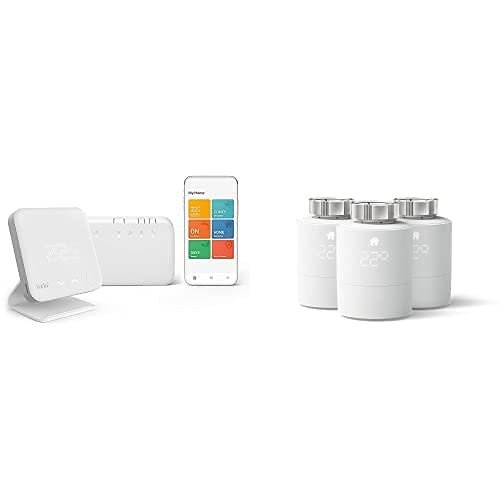Shop Lighting UK: Illuminating the Retail ExperienceIn the ever-evolving world of retail, the significance of shop lighting can not be overemphasized. It not only improves the visual appeal of items but likewise influences consumer behavior, their state of mind, and the overall shopping environment. With developments in technology and design, shop owners in the UK have a myriad of options to select from when it emerges services. This post will explore the types of lighting readily available, their advantages, and considerations for producing the ideal atmosphere in a retail area.Importance of Proper Shop LightingEffective shop Buy Vintage Lighting UK plays a crucial role in client experience and can significantly affect sales. Here are some crucial factors why appropriate lighting is essential for retail environments:
- Highlighting Products: Good lighting accentuates products, making them more appealing to clients.
- Producing Atmosphere: The ideal lighting can set the mood and evoke feelings, affecting purchasing choices.
- Enhancing Safety: Well-lit shops are safer, helping consumers navigate without threat of tripping or accidents.
- Improving Visual Merchandising: Proper lighting can improve display screens, making them dynamic and eye-catching.
Kinds Of Shop LightingShop owners can select from various kinds of lighting, each serving various functions, including ambient, task, accent, and decorative Buy Vintage Lighting UK. Here’s a breakdown of each type:Type of LightingDescriptionFinest UsesAmbient LightingProvides general illumination to the area.General retail areas like shops and supermarkets.Job LightingFocuses on particular areas to enhance visibility for tasks.Checkout counters and fitting spaces.Accent Lighting Store UKHighlights particular products or display screens, producing a focal point.Display cases, art, or marketing items.Decorative LightingAdds aesthetic appeal and boosts the general decor.Chandeliers and distinct fixtures in high-end stores.1. Ambient LightingAmbient lighting is the foundational lighting within a shop. It fills the whole space, ensuring that consumers can see and browse comfortably. Sellers must think about utilizing LED panels or ceiling-mounted fixtures, as they use energy effectiveness and exceptional light circulation.2. Job LightingJob lighting is essential for locations where particular activities occur, such as checkout counters or workstations. Shop owners can set up under-cabinet lighting or track lights to focus lighting on these locations, improving the convenience and experience for both personnel and clients.3. Accent LightingAccent lighting helps accentuate particular items or functions within the store. This type of lighting can be achieved through spotlights, track lights, or tactically put wall-mounted fixtures. It is particularly reliable for showcasing featured items, marketing displays, or artwork, directing client focus where it’s most needed.4. Decorative LightingBeyond performance, decorative lighting aspects add style and character to a retail area. Special fixtures, such as pendant lights or oversized chandeliers, can create an unforgettable environment, especially in shops or high-end sellers. These statement pieces not only brighten however also boost the shop’s branding and visual appeal.Picking the Right Lighting for Your ShopWhen choosing lighting for a retail environment, shop owners should think about the list below elements:
- Store Type: Different kinds of retail need varying lighting solutions. A jewelry store may require softer, more concentrated lights, while a supermarket may need brighter ambient lighting.
- Color Temperature: The color of light can affect the understanding of products. Warm lights (under 3000K) produce a relaxing feel, while cool lights (above 3000K) can make a space feel more contemporary.
- Energy Efficiency: The use of LED lighting not just saves energy however also reduces costs with time.
- Versatility: Install dimmers or adjustable fixtures to adapt lighting for various events or seasonal changes.
The Future of Shop LightingAs technology advances, shop lighting is ending up being progressively sophisticated. Here are some trends shaping the future of retail lighting in the UK:
- Smart Lighting Store UK Solutions: Integrated innovation allows for push-button control and automation of lighting systems by means of mobile phones or home assistants.
- Sustainable Lighting: There is a growing focus on environment-friendly options, with merchants deciding for products that decrease environmental effect.
- Centerpiece Lighting: Retailers are progressively using lighting to create specific focal points that direct client traffic and improve product display screens.
Frequently Asked Questions about Shop Lighting in the UKQ: What is the very best type of lighting for a clothes store?A: A combination of
ambient and accent lighting is typically best. Ambient lighting is necessary for overall visibility, while accent lighting can assist highlight key pieces or collections. Q: How can I make my shop lighting more energy-efficient? A: Consider using LED lights, installing movement sensing units, or integrating
dimmers. This minimizes energy intake and costs in the long run. Q: Should I utilize natural light in my shop?A: Yes, using natural light can boost customer experience whilereducing energy expenses. Nevertheless, it is very important to balance natural light with synthetic lighting, especially on cloudy days. Q: How often need to I change my shop lighting uk‘s lighting fixtures?A: This depends upon the type of fixtures utilized. LED lights can last approximately 25,000 hours, while traditional bulbsmay need to be changed more regularly. Regular maintenance checks are recommended. In a progressively competitive retail environment, shop lighting plays an important function in shaping consumer experiences and driving sales. Sellers in the UK have a large variety of alternatives and technologies at their disposal to produce the ideal atmosphere. By comprehending the value of the various types of lighting and how to implement them successfully, shop owners can improve their area, making shopping more enjoyable for clients while increasing their bottom line.